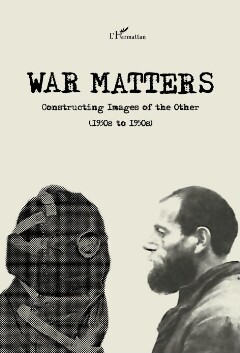Page 121 [121]
The Faces of the Enemy in the Two World Wars
distant—enemy and his goals are evil. The caricaturists employed various methods
to show the evilness and to degrade the enemy: leading politicians appeared as
weak and bloodthirsty, as injured animals or mythical figures, and in these myths
and tales they are the negative characters. The enemy soldiers were represented as
cruel and whole nations as uncivilised barbarians.
In contrast, depiction of the self had opposite features: allied soldiers and those
associated with them are good-hearted and brave, the leaders behave heroic, and
the hinterland is strong and civilised. The way of representation modified from the
period of WWI to the epoch of WWII to some extent, but the message remained
the same. Because of the repetitive and generalising character of propaganda images
some aspects of these caricatures might have influenced thinking about enemy
nations or politicians.
Acknowledgements
The research was funded by Közigazgatäsies Igazsägügyi Hivatal, Balassi Institute
(materials of WWI) and by the Hungarian Scientific Research Fund, OTKA, grant
PD 109069.
References
Borzsák I. 1990. És mégis... (And Yet...) In: I. Borzsák (ed.) Kell-e a latin? (Do we Need Latin?). Bu¬
dapest: Gondolat, pp. 11—154.
Brockhaus Enzyklopádie ( Brockhaus Encyclopaedia) 1970. Bd. 11. Wiesbaden.
Demm E. 1988. Der erste Weltkrieg in der internationalen Karikatur (NVWI in International Caricature’).
Hannover: Fackeltráger.
Fuchs E. 1916. Der Weltkrieg in der Karikatur (WVI in Caricature). vol. 1.: Biszum Vorabend des Welt¬
kriegs (Io World Wars Eve). München: Albert Langen.
Hitler A. 1943. Mein Kampf (“My Fight). Miinchen: Zentralverlag der NSDAP.
Karsen FE. 1923. Deutsche Vesuchsschulen der Gegenwart und ihre Probleme (‘German Versuchsschulen of the
Present and their Problems’). Leipzig: Dürr'sche Buchhandlung.
Kuhlmann P. 2006. Humanismus und Alte Sprachen im Dritten Reich (“Humanism and the Old Langu¬
ages in the Third Reich). Archiv fiir Kulturgeschichte, vol. 88, pp. 409-431.
Lasswell H.D. 1971. Propaganda Technique in World War I. London: Cambridge.
Lovász L. 2010. A középiskolai ógörög nyelvoktatás 1850 és 1945 között az ELTE Trefort Agoston Gyakor¬
lóiskolájának értesítői alapján (Ancient Greek Language Teaching between 1850 and 1945 in the
Secondary School, as Reflected in the Report Cards of ELTE Trefort Ágoston Grammar School).
Kézirat (Manuscript).
Schulz-Besser E. 1918. Die Kriegskarikatur im ersten Weltkrieg (War Caricatures in WWT). Leipzig: See¬
mann.
Schuster W. 1915. Witz und Satire. Der Humor im Weltkrieg. Sammlung auserwählter zeitgemäffer Kriegs¬
Zornbilder (‘Joke and Satire. Humour in World War. Collection of Chosen Contemporary Kriegs¬
Zornbilder). Mainz: Prickarts.
119

